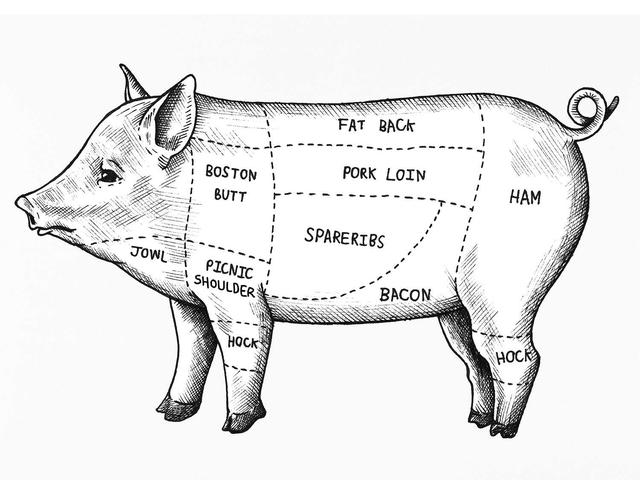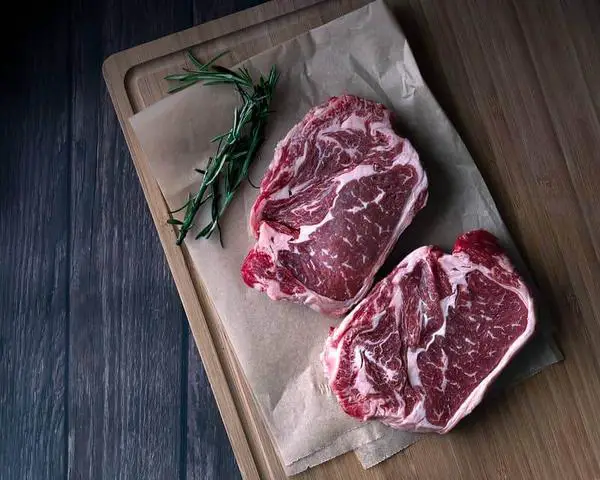
“Chuck Eye vs Ribeye: Unveiling the Tastiest Cuts of Beef! Discover the subtle differences in flavor, tenderness, and affordability between these two popular steak choices. Whether you’re a seasoned carnivore or a curious foodie, join us as we dissect both cuts, helping you make an informed decision for your next sizzling culinary adventure!”
Ribeye vs Chuck Eye Steak: What’s the Difference?
In the world of steak, the ribeye steak is well-known and often considered a favorite among beef lovers. However, the chuck eye steak is a cut that is often overlooked. The main difference between these two cuts lies in their muscle composition. The chuck eye steak is taken from the area where the chuck ends and the ribeye begins, giving it similar qualities to beef rib steaks.
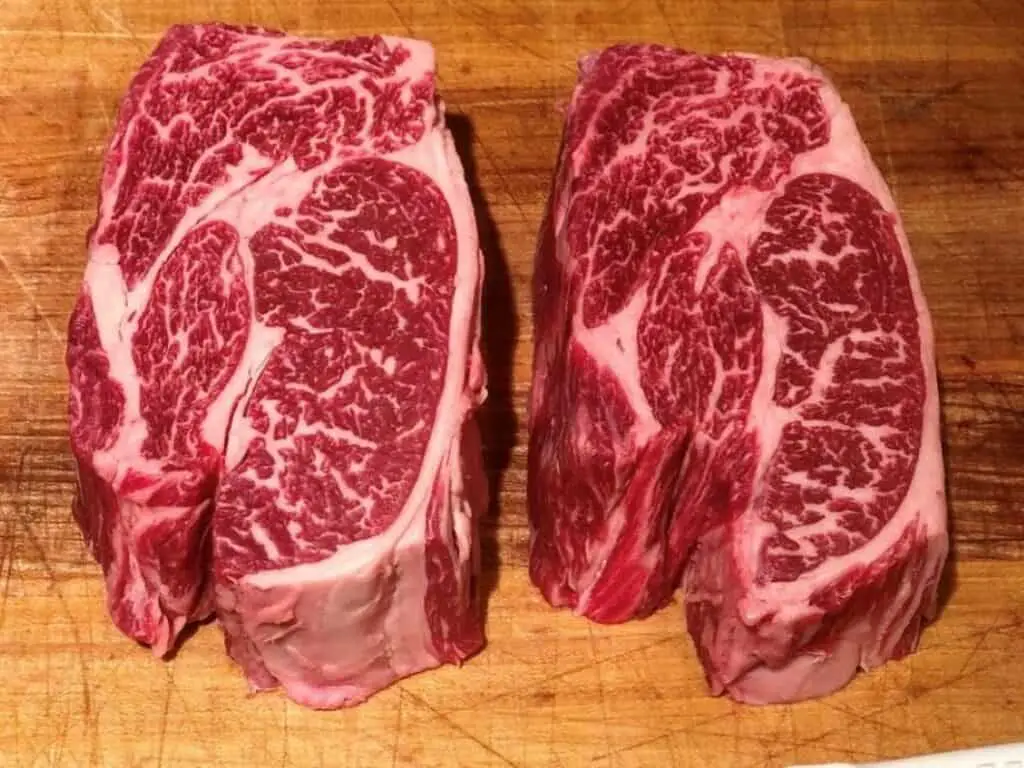
When it comes to muscle composition, all ribeye steaks have an eye, which is the meatiest portion of the steak. Surrounding this muscle are other muscles such as spinalis dorsi, complexus, and longissimus costarum. The cap of a ribeye steak wraps around the eye and is heavily marbled and tender, making it highly regarded by steak enthusiasts.
The chuck eye steak, on the other hand, features a decent-sized spinalis dorsi, kernels of fat/lean meat or complexus, and a smaller ribeye muscle. This difference in muscle composition contributes to why the chuck eye steak is not as popular as the ribeye. Some people may find the fat content in this cut off-putting. However, for those who understand the different muscles and appreciate them, the chuck eye steak offers an opportunity to enjoy a good steak at a lower price.
Understanding Muscle Composition of Rib and Chuck Eye Steak
In the world of steak, the ribeye steak is well-known and highly favored. However, the chuck eye steak is often overlooked. This cut is taken from where the chuck ends and the ribeye begins, sharing similar qualities to beef rib steaks. The main difference between these two cuts lies in their muscle composition.
The ribeye steak features an eye, which is the meatiest portion of the steak. Surrounding this muscle are the spinalis dorsi, complexus, and longissimus costarum muscles. Additionally, every ribeye steak has a cap, a heavily marbled and tender piece of meat that wraps around the eye.
On the other hand, the chuck eye steak comes from a portion of the beef chuck roll and lies beneath the scapula bone. It shares similar muscles with beef rib steaks but tapers towards the front as it moves away from ribs 6 through 12. This results in a smaller ribeye muscle compared to a traditional rib steak.
Longissimus Dorsi or “Eye” of Ribeye
The Longissimus Dorsi, also known as the “eye” of the ribeye, is the meatiest portion of the ribeye steak. It is surrounded by muscles such as the spinalis dorsi, complexus, and longissimus costarum. This muscle is heavily marbled and is considered to be the best muscle on the entire steer.
The Longissimus Dorsi is typically found in all ribeye steaks and is the primary muscle that gives these steaks their tenderness, juiciness, and overall flavor. It is often referred to as the “eye” because it is located in the center of the steak and provides a rich and flavorful eating experience.
In bone-in rib steaks, you may also find the Longissimus Costarum muscle, which is similar to the complexus but is often removed in boneless and frenched varieties. The Longissimus Costarum adds additional flavor and texture to the ribeye steak.
Overall, the Longissimus Dorsi or “eye” of ribeye is a key component of this popular cut of beef and contributes significantly to its taste and quality.
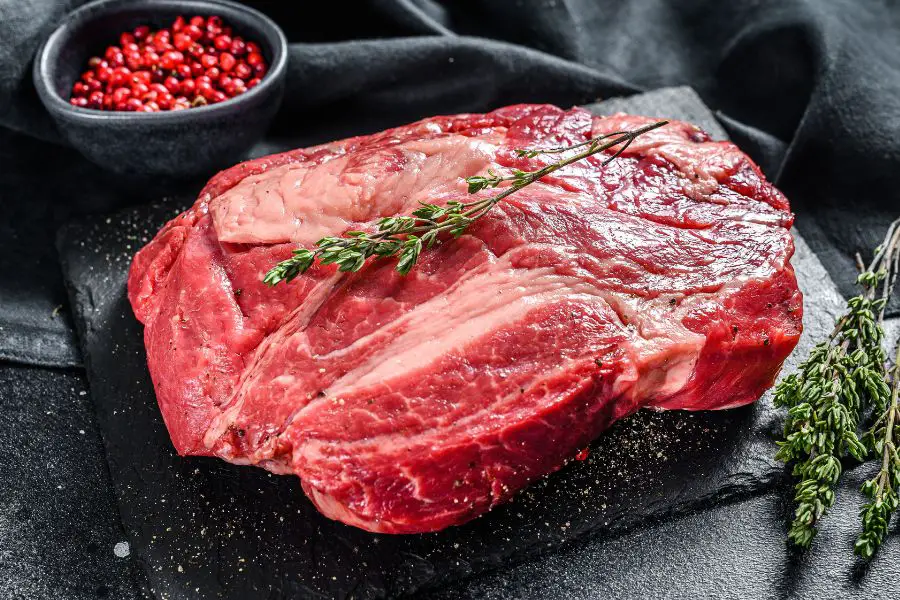
Spinalis Dorsi or Ribeye “Cap”
The ribeye “cap” refers to the muscle that wraps around the eye of the ribeye steak. It is heavily marbled and is considered to be the best muscle on the entire steer in terms of tenderness and flavor. This muscle is known as the spinalis dorsi.
The complexus muscle is a small muscle on the ribeye steak that may not always be present, depending on where the steak is taken from. It is similar in tenderness to the spinalis dorsi but is surrounded by fat, which can be off-putting to some.
The longissimus costarum muscle is found in bone-in rib steaks but is often removed in boneless and frenched varieties. It is similar to the complexus but larger in size.
In chuck eye steaks, we get a decent-sized spinalis dorsi, kernels of fat/lean meat (complexus), and a smaller ribeye muscle. The chuck eye steak has some of the same muscles as beef rib steaks but with different proportions due to its location beneath the scapula/blade bone.
Complexus
The complexus muscle is a small muscle that is present in both ribeye steaks and chuck eye steaks. It is similar to the spinalis dorsi muscle in terms of tenderness and flavor. However, it is often surrounded by swaths of fat, which can be off-putting to some consumers. In some cases, the complexus muscle may not even be present in ribeye steaks, but it is maximized in chuck eye steaks.
The main difference between a chuck eye steak and a ribeye steak lies in the muscle composition. While both cuts share similar qualities due to their proximity to each other on the beef carcass, there are some variations. Ribeye steaks feature an eye, which is the meatiest portion of the steak. Surrounding this muscle are the spinalis dorsi, complexus, and longissimus costarum muscles. Ribeye steaks also have a cap muscle that wraps around the eye and is heavily marbled, making it tender and flavorful.
Due to its muscle composition, a chuck eye steak may be less tender than a ribeye steak. The larger kernels of fat in the chuck eye steak can be perceived as less desirable by some consumers. However, for those who understand the different muscles and their qualities, the chuck eye steak can be seen as an opportunity to pay less for a good steak. The flavors of a chuck eye steak are often described as “beefy” and comparable to those of a rib steak.
Chuck eye steaks are forgiving when it comes to cooking because of their muscle composition. Even if cooked beyond medium-rare, these muscles will still remain tender and easy to separate. The swaths of fat in the steak can melt and enhance the overall flavor, while also aiding in cutting or slicing. On the other hand, a ribeye steak may become drier and less tender when cooked beyond medium rare.
Chuck eye steaks are often overlooked by consumers and may not be as readily available as ribeye steaks. They are generally cheaper than ribeye steaks due to their perceived lower desirability. However, the availability and pricing of these cuts may vary depending on your location and where you purchase them.
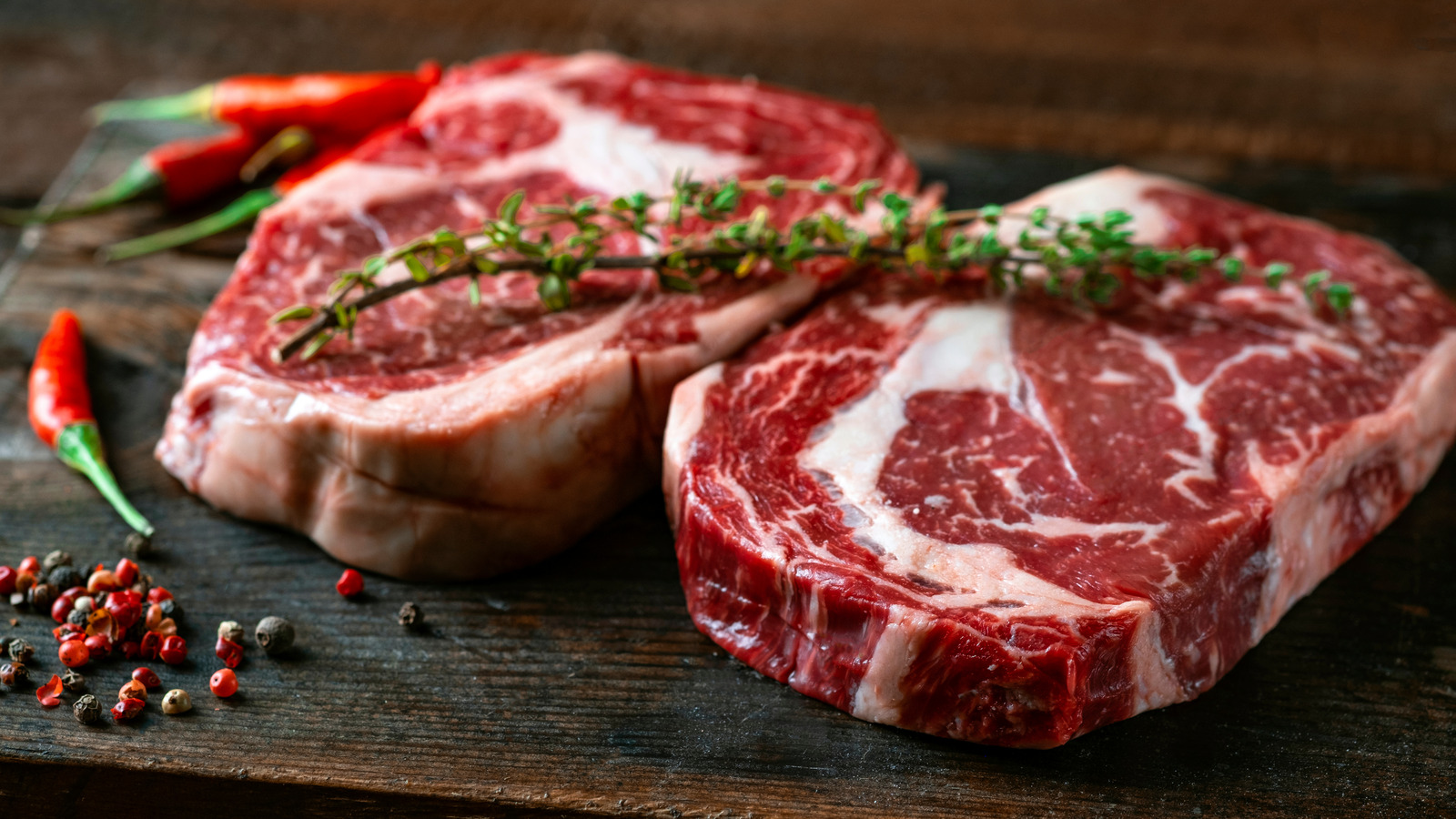
Longissimus Costarum or Lip/Nose
The Longissimus Costarum, also known as the lip or nose, is a muscle found in both ribeye and chuck eye steaks. It is typically removed in boneless and frenched rib steaks but can be present in bone-in rib steaks. It is similar to the complexus muscle but is often smaller in size. The Longissimus Costarum adds tenderness and flavor to the steak, contributing to its overall quality.
The beef rib primal is where the ribeye steak comes from. When butchers separate the eight primal cuts of beef, the rib primal is separated from the chuck primal at the 5th/6th rib bone. This separation occurs because the smaller rib bones are not suitable for steaks. The cross-section of the ribeye at the 12th/13th rib is used to analyze the quality of the meat, with intramuscular fat determining its grade rating (Prime, Choice, or Select). The beef rib primal plays a crucial role in creating high-quality ribeye steaks.
The chuck eye steak comes from a portion of the beef chuck/chuck roll and lies beneath the scapula/blade bone. It shares some muscles with beef rib steaks due to its proximity to the chuck end of the carcass. However, as it tapers towards ribs 2-3, it contains fewer shared qualities with rib steaks. The chuck eye steak typically includes a decent-sized spinalis dorsi, kernels of fat/lean meat (complexus), and a smaller ribeye muscle. This muscle composition and size contribute to its lower popularity compared to ribeye steaks.
The chuck eye steak is often compared to a rib steak in terms of taste. Both cuts are known for their “beefy” flavors, with the chuck section having forward flavors. While the ribeye steak may be more desirable to consumers due to its muscle composition, the chuck eye steak can still be tender and flavorful. The swaths of fat in the chuck eye steak contribute to its overall flavor and do not exist in excessive amounts. This makes it forgiving for cooking, even for beginners, as the muscles remain tender regardless of internal temperature.
What is a Ribeye Steak?
A ribeye steak is a popular cut of beef that comes from the beef rib primal. It is known for its tenderness, juiciness, and rich flavor. The main muscle in a ribeye steak is the longissimus dorsi, which is also called the rib eye muscle. This muscle is surrounded by other muscles such as the spinalis dorsi, complexus, and longissimus costarum. The ribeye steak also features a cap, which is a highly marbled and tender piece of meat.
A chuck eye steak is a cut of beef that comes from the chuck primal, specifically from where the chuck ends and the ribeye begins. It shares similar qualities to beef rib steaks but has some differences in muscle composition. The main muscles in a chuck eye steak are the spinalis dorsi, kernals of fat/lean meat or complexus, and a smaller ribeye muscle. While it may not be as popular as a ribeye steak, it offers good flavor and tenderness at a lower cost.
The primary difference between a ribeye steak and a chuck eye steak lies in their muscle composition. A ribeye steak primarily consists of the longissimus dorsi muscle, which is tender and flavorful. It also features other muscles such as the spinalis dorsi, complexus, and longissimus costarum. In contrast, a chuck eye steak has larger portions of the complexus muscle (kernals of fat/lean meat) and smaller portions of the ribeye muscle.
What is a Chuck Eye Steak?

A chuck eye steak is a cut of beef that is taken from the chuck section of the animal, specifically from where the chuck ends and the ribeye begins. It is an extension of the beef rib/ribeye roll and shares similar qualities to beef rib steaks. The main difference between a chuck eye steak and a ribeye steak lies in their muscle composition.
The chuck eye steak contains several muscles, including the spinalis dorsi, which is heavily marbled and supremely tender, making it widely considered as the best muscle on the entire steer. It also features kernals of fat/lean meat or the complexus, which has comparable tenderness to the more desirable spinalis dorsi muscle. Additionally, there is a smaller ribeye muscle present in the chuck eye steak.
Due to its muscle composition and size, the chuck eye steak is not as popular with consumers compared to ribeye steaks. It is often overlooked and cited for its higher fat content. However, for those who understand steak and appreciate different muscles, it provides an opportunity to enjoy a good steak at a lower cost.
The Importance of Beef Fabrication in Meat Sales
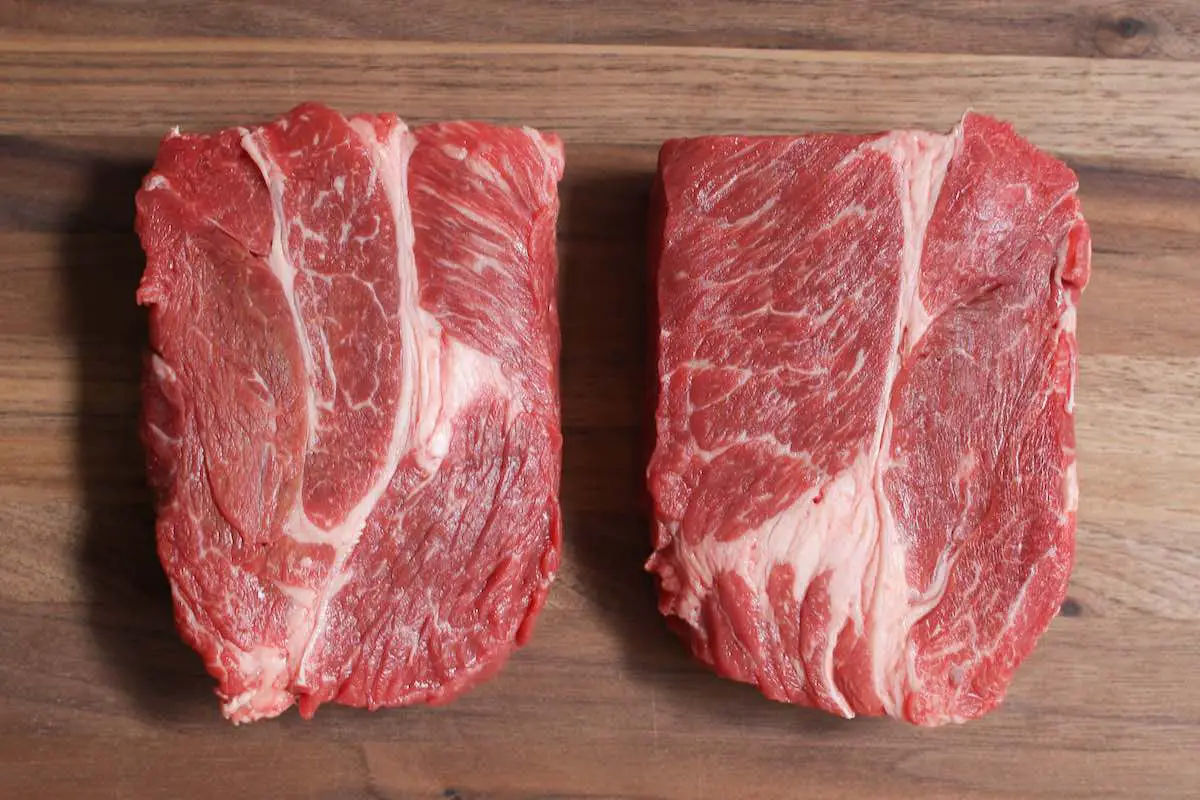
When it comes to selling meat, butchers play a crucial role in fabricating cuts of beef that are both profitable and appealing to consumers. They cut the beef in a way that maximizes their profits while also taking into consideration what consumers prefer. The psychology of meat sales is complex, as people tend to buy what looks good and butchers cut what sells. This means that consumer preferences heavily influence the choices made by butchers.
One factor that affects consumer preferences is the amount of fat present in a cut of meat. Most consumers do not like buying fat, regardless of how the beef looks. This has an impact on the popularity and price of certain cuts. For example, the complexus muscle, which is a small muscle surrounded by fat, is often overlooked by consumers because they prefer cuts with less visible fat. However, this muscle is actually quite tender and comparable to the more desirable spinalis dorsi muscle.
The way a beef carcass is fabricated into retail cuts also influences consumer preferences and prices. Butchers separate different primal cuts of beef based on their quality and characteristics. For example, the rib primal is separated from the chuck primal at the 5th/6th rib bone because these smaller bones are not ideal for steaks. This separation point also affects the composition of muscles in each cut. The ribeye steak comes from the rib primal and has a higher demand compared to the chuck eye steak because it contains more desirable muscles like the longissimus dorsi.
Differences in Price
The chuck eye steak is generally cheaper than the ribeye steak. This is mainly due to the difference in muscle composition and consumer preference. The ribeye steak, being more desirable and sought after by consumers, commands a higher price per pound. On the other hand, the chuck eye steak, with its larger kernels of fat and smaller longissimus dorsi muscle, is considered less desirable by some consumers and therefore is priced lower.
Differences in Taste
The ribeye steak is known for its rich, beefy flavor. It is often described as having a buttery texture and a melt-in-your-mouth tenderness. The marbling of fat throughout the meat adds juiciness and enhances the overall flavor. The ribeye cap, in particular, is highly prized for its exceptional taste.
On the other hand, the chuck eye steak has a slightly different taste profile. It still offers a beefy flavor, but it tends to be more pronounced and robust compared to the ribeye. The larger kernels of fat in the chuck eye steak contribute to a richer and fuller flavor. Some people may find the higher fat content off-putting, but others appreciate it as it adds depth and moisture to the meat.
In terms of tenderness, both cuts can be quite tender when cooked properly. However, due to its muscle composition, the chuck eye steak may have a slight advantage in tenderness. The complexus muscle in the chuck eye steak is comparable to the more desirable spinalis dorsi muscle found in ribeye steaks. This means that even if cooked beyond medium-rare, the chuck eye steak can still offer a tender eating experience.
Difference in Tenderness
The tenderness of a steak is influenced by the muscle composition and marbling. In the case of the ribeye steak, it contains the highly prized ribeye cap, which is heavily marbled and supremely tender. The complexus muscle, although small in size, is also tender and comparable to the spinalis dorsi. This combination of muscles contributes to the overall tenderness of a ribeye steak.
On the other hand, the chuck eye steak features a larger portion of the complexus muscle and a smaller longissimus dorsi muscle. While the complexus muscle is still tender, it may be surrounded by more fat compared to a ribeye steak. Some individuals may find this fat content off-putting, but it can contribute to flavor and juiciness when cooked properly. Despite these differences, both cuts can be tender when prepared correctly.
In conclusion, while both chuck eye and ribeye are flavorful cuts of beef, ribeye is considered more tender and has a higher fat content, resulting in a richer taste. However, chuck eye offers good value for money and can still deliver great flavor when properly cooked. Ultimately, the choice between the two depends on personal preference and budget.
Learn More About Grilling
If you want to learn more about grilling, check out these other helpful resources!






